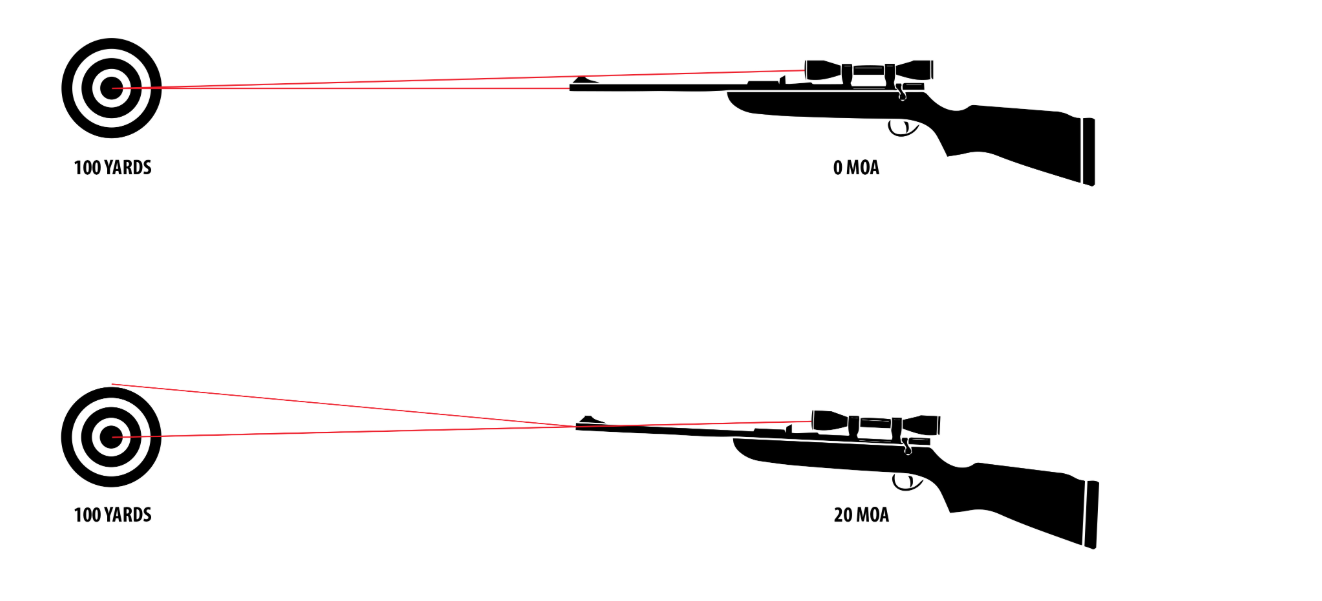Picatinny Rails & MOA Explained
When choosing a mounting system for your rifle, a picatinny rail is a surefire choice for reliability, compatibility and accuracy.
What is a Picatinny rail?
A picatinny rail is a standardised rail system used on firearms for mounting accessories like scopes, lights, lasers, and grips. It's characterised by its evenly spaced, rectangular slots and standardised dimensions, allowing for repeatable attachment of various accessories. Picatinny rails are known for their ability to allow mounted accessories to return to their original zeroing position after being removed and reattached, due to the precision and repeatability of the mounting system. Picatinny rails can be made from various materials, including steel and aluminium, with steel generally being more wear-resistant and aluminium lighter and more corrosion-resistant.
What is MOA?
In the context of rifle scopes, MOA stands for "minute of angle," an angle of angular measurement. It's used to describe the size of the reticle's adjustment increments in windage and elevation turrets. Essentially, 1 MOA represents the amount of angular movement that will change the point of impact on a target by approximately 1 inch at 100 yards. When you adjust the scope by 1 MOA, the bullet's point of impact will shift by approximately 1 inch at 100 yards. This relationship changes with distance; for example, at 200 yards, 1 MOA would shift the bullet's impact by approximately 2 inches.
How can a Picatinny rail have MOA?
A picatinny rail used to mount a rifle scope can sometimes have MOA built into the rail in the form of a downwards tilt, allowing you to use more of the internal adjustment of your scope. How it does this is when you are zeroing the rifle scope, you will need to adjust down in the scope's elevation adjustment in order to zero the rifle scope at whatever distance you choose (generally 100yds). This tilt effectively "shifts" the scope's elevation adjustment range with the effect of having more usable upward adjustment for dialling in the correct point of impact at longer ranges.
If we had a rifle with a 0 MOA base, and there was a laser going through the middle of the scope, and the middle of the rifle bore that went forever and let's say the rifle was zeroed at 100 yards, those 2 lasers would intersect at that 100 yard target. If we then changed to a 20MOA base, the scope's laser would be on target, and the rifle's laser would be hitting the target 20 inches high. This is essentially how a 20 MOA base works. Since you are now hitting 20 inches high, you can dial the scope back so that the rifle is zeroed at 100 yards again, and you have an extra 20 inches of elevation to work with. Another example, the Arken EP5 7-35x56 MOA has 110 MOA of internal adjustment. On a 0 MOA rail, you will have an equal amount of up and down adjustment (55 MOA up and 55 MOA down), as on a flat surface, you will be in the centre of the scope's elevation adjustment. Whereas, on a 20 MOA picatinny rail, you will need to adjust 20 MOA down when zeroing the scope to adjust for the tilt in the rail, giving you 75MOA of upwards adjustment and 35MOA of downwards adjustment after zeroing the scope.
When should you not use a Picatinny rail with MOA adjustment?
While a Picatinny rail with MOA built into it is generally advantageous for most forms of shooting, sometimes there are instances where using one can result in problems. If you have a rifle scope with a smaller amount of internal adjustment, you may run into an issue where you don't have enough adjustment to adjust for the cant in the rail to zero the scope, and you may need to set a zero for a further distance or use a 0 MOA picatinny rail. In some hunting applications, MOA picatinny rails aren't required due to the distances that are likely to be observed when taking a shot being generally shorter and not needing extra adjustment that cannot be provided by the scope alone. On thermal and night vision scopes, when zeroing, the reticle will be slightly off centre, so the crosshair/reticle sits where the bullet will hit. When adding a 10/20/30 MOA tilt to the rail, the reticle will need to sit higher and higher to zero at shorter distances. This could work well if you are shooting at longer ranges and you want to zero at longer ranges, in which the reticle will sit further towards to centre. However, for most shooting applications, e.g., Ratting, squirrel and foxes, where most of the shots are shorter distances, the reticle sitting higher could be an inconvenience.
Summary
While Picatinny rails with inbuilt MOA can be very advantageous for longer range shooting, Consideration must be taken when choosing the amount of MOA and the style of shooting undertaken to see if it is right for what you need.







